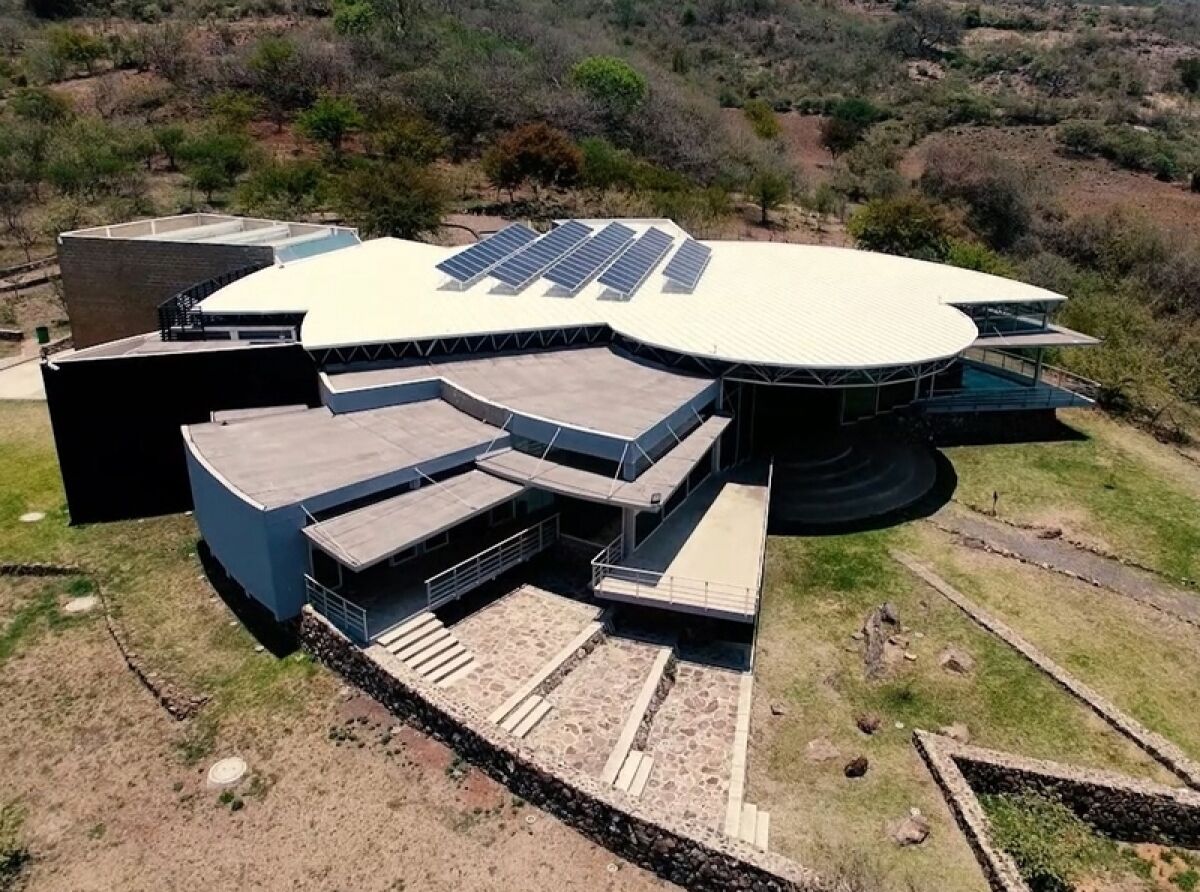In September of 2018 the Phil Weigand Guachimontones Interpretive Center was inaugurated as the first archaeological site in Jalisco operating with 100% green energy.
For this, 68 photovoltaic cells and 23 autonomous luminaires were placed that will allow it to operate with clean energy. In addition, the exhibition The Economic System of Aztatlán was also inaugurated.
Myriam Vachez Plagnol, Secretaria de Cultura for Jalisco, pointed out that the installation of the photovoltaic cell system in the CIG “will serve to restore that greatness to nature that has given us so much, simply by not polluting more, simply by not emitting more greenhouse gases, thanks to that today the Guachimontones site is 100% green. The work to combat climate change has been an intensive work in this government, and in a few days the La Vega station and the San Marcos station (of Vías Verdes) will be also 100% green."
This initiative is part of an energy efficiency and generation project carried out by the Government of the State of Jalisco in different dependencies and includes actions such as the replacement of lights, acquisition and use of electric and hybrid cars, as well as the installation of solar panels in various buildings.
The investment for the CIG was 1,123,000 pesos resourced in the budget of the State Program for Action against Climate Change 2017. With this action the emission of 29,666 kilograms of Co2 will be avoided, in addition to monthly savings of 9,644 pesos of electric energy, with a return on investment in a maximum time of four years and three months.
Puerto Vallarta Guest Municipality
The first of the two exhibitions of Puerto Vallarta that are in the CIG is Project A: Cultural Journey Through the Beaches of Western Mexico, a series of screens that are at the entrance of the enclosure and that account for the development of archaeological works that have been made over the years along the western coast of the country. It displays a series of maps, photographic images, and the description of some of the most important archaeological sites of that coastal strip.
The Economic System of Aztatlán; Cotton and Cacao exhibition explains how these natural resources were used as a bargaining chip, and how the hot and humid condition of the region allowed the development of these societies as well as sites that are important today, such as the archaeological site of Ixtapa (Ixtapan), which is strategically located next to the El Salado estuary, in Puerto Vallarta.

